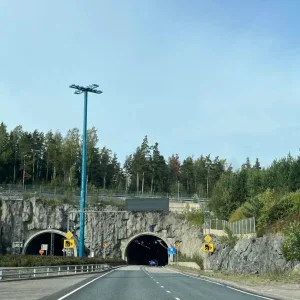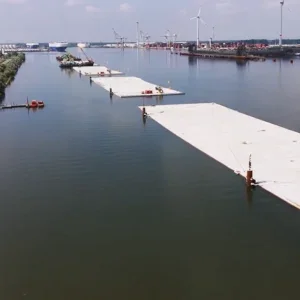The T&T Awards 2011 saw a truly incredible response. The best endeavours and innovations from across the industry and around the world flooded into the T&T office. Niche technology and decade-spanning megaproject alike were compiled for the consideration of the independent judges.
Also drawn from around the world; the judging panel consisted of BTS chairman Bob Ibell of London Bridge Associates; Bob Frew, executive director of AECOM Asia; John Endicott, executive director and chairman, geotechnical of Aecom Asia; David Hindle, of OTB engineering and also Roger Bridge, tunnels construction manager at Balfour Beatty.
The winners, entries of note and judges comments are as follows:
Investor in tunnellers
Winner: BTS Young Members
Entry: The BTS Young Members committee submitted their awards entry based on the time 30 young tunnellers in the UK spend promoting the tunnelling industry to the public and those in education. They also host talks and provide a voice for young tunnellers enabling them to further their professional development. See T&T Awards 2011 page 24.
Judges’ comments: A key criteria for this award is demonstrating how the entrants have gone beyond the call of duty. The BTS Young Members have done exactly that sacrificing their free time to encourage others into the tunnelling industry and educate younger tunnellers.
Innovative use of equipment:
Winner: Rehau/Zublin/Arup
Entry: The three firms developed a pipe system embedded in segmental tunnel lining that utilises ground and tunnel operation heat changes as an energy source. The technology was piloted on the Jenbach high speed rail tunnel project in Austria. See T&T Awards 2011 page 12.
Judges’ comments: Like all great ideas this one is very simple. It is a advance in the industry’s approach to cooling the tube, reducing the operational cost of the tunnel and making tunnels more sustainable. The concept is fantastic and it presents one of the biggest potential steps forward for the industry for many years.
Highly commended: Halcrow
Entry: The ground anchor integrity testing (Granit) system allows the testing of rockbolts and other ground anchorage systems. See T&T Awards 2011 page 15.
Judges’ comments: This is a nice bit of kit that has come a long way since the 1990s. While the idea is not very new, its deployment by Halcrow shows its capability and potential. It is a strong contender for the award and deserves to be highly commended.
Innovative use of instrumentation:
Winner: Vinci/Skanska and Nils Ryden of Lund University in Sweden
Entry: The Hallandsas project provided a platform for the parties to develop a non-destructive method for checking the quality of backfill material in segmentally lined tunnels. The technique was based on the Impact Echo Q-factor. See T&T Awards 2011 page 18.
Judges’ comments: This is a great new system that has a lot of time and effort invested in developing it. The work has been conducted in a good technical manner and has achieved a solution to a long running industry problem. It is a sound platform for future developments to launch from.
Highly commended: Mott MacDonald
Entry: The first geotechnical interpretative report used in Hungary for the Bataapati underground radioactive waste repository. Confidence requirements of the facility called for an in depth understanding of the surrounding rock. Continuous feedback from construction and sophisticated numerical modelling based on monitoring results was brought into the report. See T&T Awards 2011 page 21.
Judges’ comments: The work has been carried out in a responsible manner and used as an example this project improves the industry’s understanding of rock behavior. The judges felt that the submission could have dwelt more on the innovative aspects of the technique but felt that it deserved to be highly commended.
Innovative use of materials:
Winner: None of the submissions were considered worthy of an award by the judges.
Lifetime achievement medal:
Winner: Alan Runacres and James Monsees
Entry: Both men have contributed extensively to the tunnelling industry, both in technical accomplishment and inspiration to future tunnellers. See T&T Awards 2011 page 26 for Runacres and 28 for Monsees.
Judges’ comments: We though both these engineers had made major consistent and dedicated contributions throughout their careers.
Preservation:
Winner: Balfour Beatty/Mott MacDonald
Entry: The A3 Hindhead Improvement project built through the Surrey Hills Area of Outstanding Natural Beauty also had to contend with protected species in the local environment. Onsite reuse of spoil, extensive surveys, primary SCL used as part of permanent support and new soil nailing techniques were used to lessen impact. See T&T Awards 2011 page 30.
Judges’ comments: The Hindhead project clearly went beyond the demands of the client to protect the Area of Outstanding Natural Beauty and reduce wider environmental impacts by using a less resource intensive construction method and minimising movement of materials on and off the site.
Tour de force:
Winner: Robbins
Entry: The TBM working on the Olmos trans-Andean tunnel has faced incredibly challenging conditions. Complex geology involving floods, fault zones and over 10,000 rock bursting events have thwarted multiple excavation attempts since plans were finalised in the 1950s. Some 2,000m of overburden makes it the second deepest tunnel in the world (after Gotthard at 2,500m). TBM modifications were necessary and proved successful. Breakthrough will mark the first bisection of the Andes. See T&T Awards 2011 page 5.
Judges’ comments: This project was a clear winner for the massive challenge faced cutting in very hard rock under enormous overburdens. The skill and hard work of the team delivering this very complex project is obvious. The entry surpassed all others to win the award.
Foresight:
Winner: Aecom
Entry: The TM-CLKL underwater link between Hong Kong and Lantau was originally envisaged as an immersed tube tunnel, however Aecom proposed a TBM drive to avoid key environmental constraints including endangered species, sensitive water quality, strong currents, diversion of power and telecom lines and heavy sea traffic. French decompression tables were also introduced to improve tunnelling safety. See T&T Awards 2011 page 10.
Judges’ comments: The designers on this project have identified a number of detrimental impacts the works could have on the environment and have worked hard to find a construction solution that mitigates these. It is a fine example of solid planning and foresight.
Endurance:
Winner: Skanska/Vinci
Entry: The drawn out project in Sweden achieved breakthrough 18 years after it broke ground. Hopes of a quick completion vanished instantly. Open gripper TBM was switched for drill and blast, meeting failure in the wake of water inflows and environmental damages. The following years of accidents, prosecutions, lengthy legal processes, negative media attention, local protests, political discussions and a loss of faith in the tunnelling industry itself finally came to an end. See T&T Awards 2011 page 8.
Judges’ comments: This project has faced persistent challenges and many setbacks but each time the team has worked to overcome them. Balancing the many problems from aggressive water ingress to extremely weak rock, the team have had to be steadfast and resilient.







